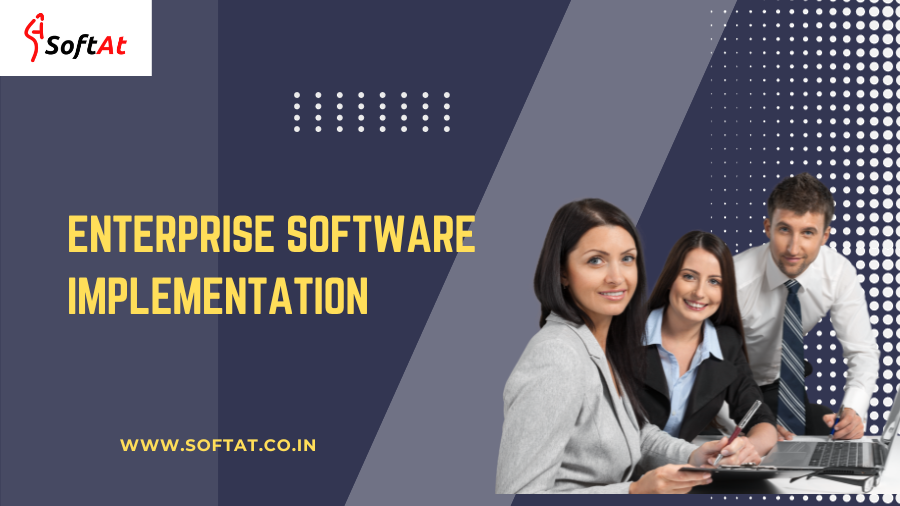Introduction: Embracing Change in the Business World
In today’s rapidly evolving business landscape, the implementation of enterprise software has become a cornerstone for success. From streamlining operations to enhancing collaboration, the right software can revolutionize the way companies function. This article delves into the intricacies of enterprise software implementation, guiding you through the transformative journey.
Understanding Enterprise Software: A Holistic Overview
Defining Enterprise Software
Enterprise software is more than just a set of tools; it’s a comprehensive solution tailored to meet the complex needs of large organizations.
Key Components of Enterprise Software
Exploring the fundamental building blocks that constitute a robust enterprise software system.
Challenges in Implementation: Navigating the Complexities
Overcoming Resistance to Change
Addressing the human factor in implementing new software solutions and strategies to foster a positive transition.
Integration Challenges
Navigating the complexities of integrating new software with existing systems for a seamless operational flow.
Choosing the Right Software: A Decision-Making Guide
Assessing Organizational Needs
Understanding the unique requirements of your business to make informed decisions on software selection.
Vendor Selection Criteria
Evaluating potential vendors based on factors such as scalability, support, and compatibility.
Implementation Strategies: Ensuring a Smooth Transition
Phased Rollouts
Breaking down the implementation process into manageable phases for better control and reduced disruptions.
User Training and Adoption
Investing in comprehensive training programs to ensure users are comfortable and proficient with the new software.
Measuring Success: Key Performance Indicators (KPIs) for Evaluation
Operational Efficiency
Assessing improvements in day-to-day operations and workflow efficiency.
User Satisfaction
Measuring the satisfaction levels of end-users to gauge the overall success of the implementation.
The Future of Enterprise Software: Trends and Innovations
Artificial Intelligence Integration
Exploring the role of AI in enhancing the capabilities of enterprise software for predictive analysis and automation.
Cloud-Based Solutions
Understanding the shift towards cloud-based platforms and their impact on scalability and accessibility.
Conclusion: Embracing the Digital Future
In conclusion, enterprise software implementation is not merely a technological upgrade but a strategic move towards staying competitive in the digital era. By understanding the challenges, making informed choices, and prioritizing user adoption, businesses can unlock the full potential of their software investments.
Frequently Asked Questions
- Q: How long does it typically take to implement enterprise software?
- A: The timeline varies based on the size and complexity of the organization but can range from several weeks to several months.
- Q: What role does user training play in successful implementation?
- A: User training is crucial to ensure a smooth transition and optimal utilization of the software’s features.
- Q: Can small businesses benefit from enterprise software implementation?
- A: Absolutely. While the scale may differ, small businesses can achieve efficiency gains and improved operations through tailored solutions.
- Q: Is it necessary to hire external consultants for software implementation?
- A: It depends on the internal expertise of the organization. Consultants can provide valuable insights and accelerate the implementation process.
- Q: How often should enterprises update their software systems?
- A: Regular updates are essential to stay current with technology trends and security requirements. The frequency depends on the software and industry standards.
Read More:





